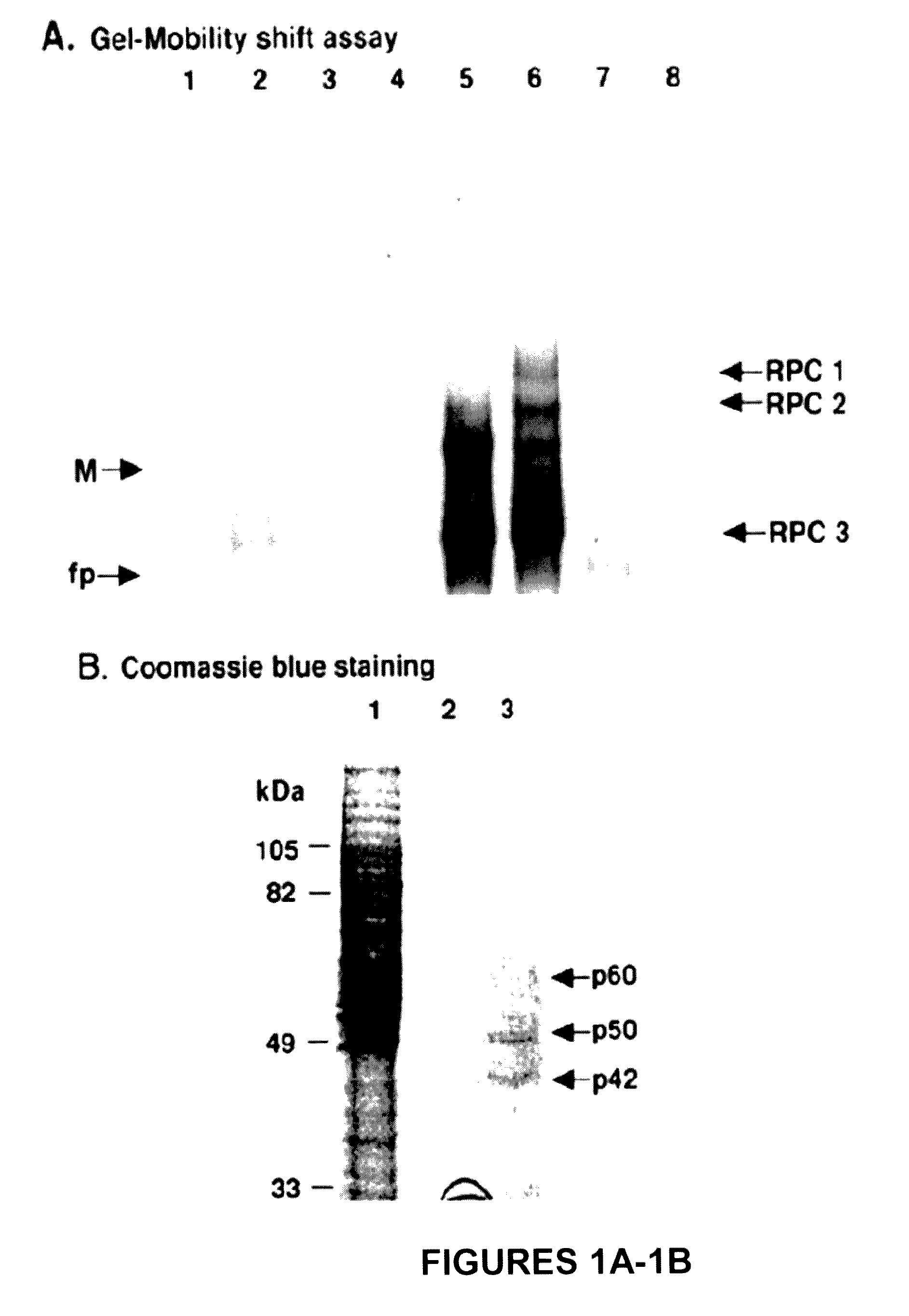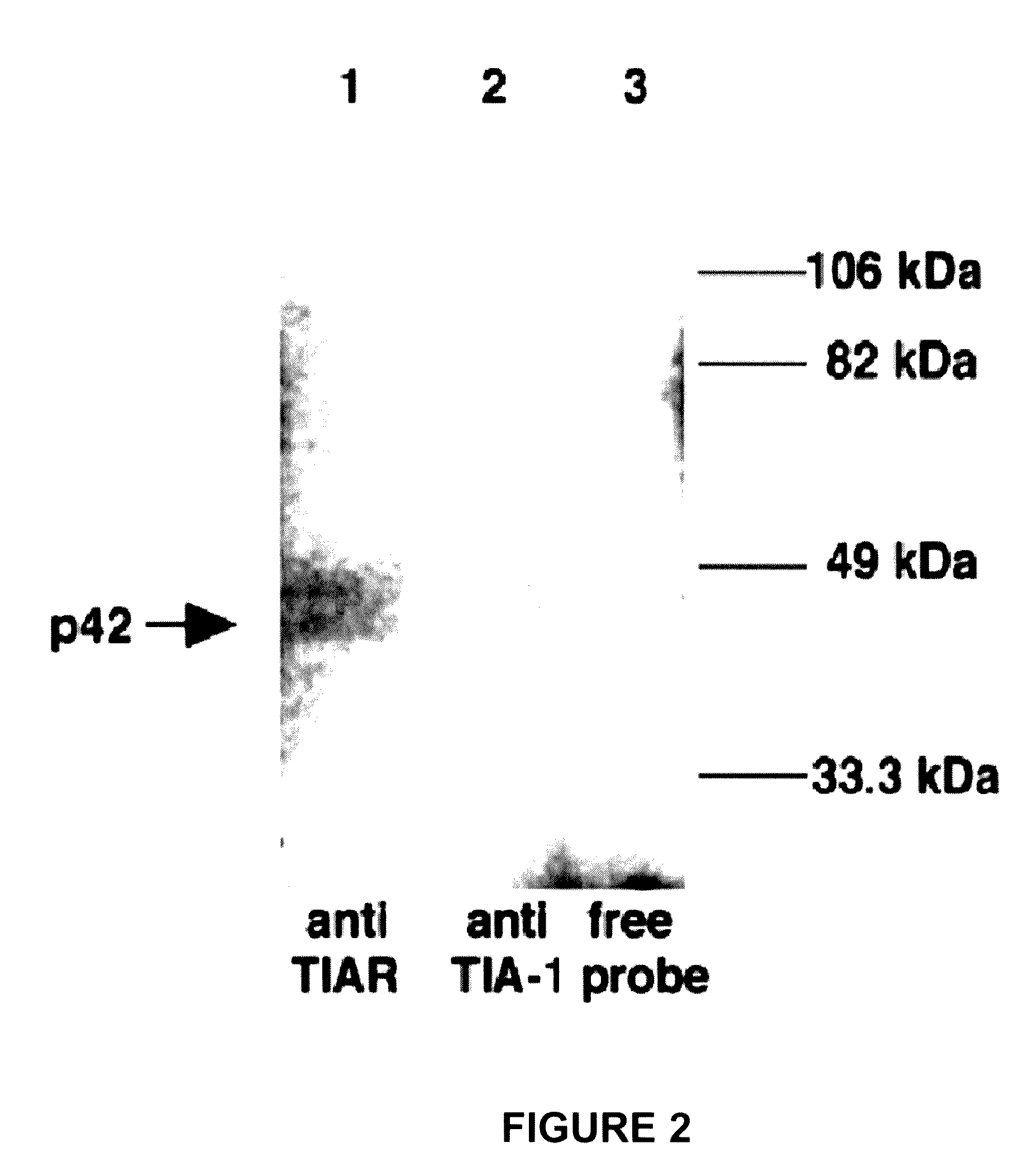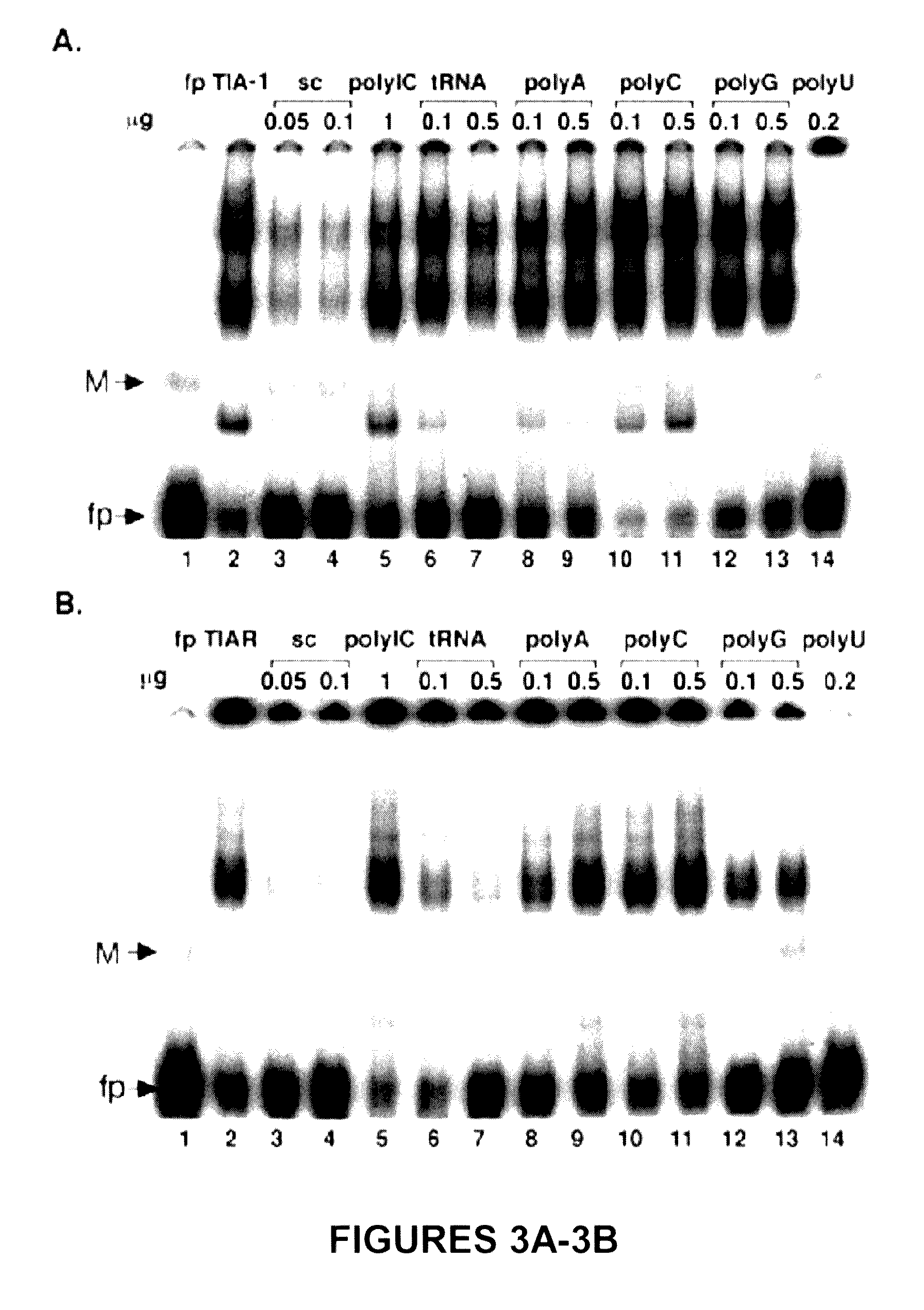Methods and compositions for inhibition of viral replication
a technology of viral replication and composition, applied in the direction of viruses/bacteriophages, peptide/protein ingredients, instruments, etc., can solve the problems of loss of work days, death of animals, plant destruction, etc., and achieve the effect of inhibiting or interfering with viral replication
- Summary
- Abstract
- Description
- Claims
- Application Information
AI Technical Summary
Problems solved by technology
Method used
Image
Examples
example 1
Materials and Methods Used Herein
[0130]Cells.
[0131]Baby hamster kidney (BHK-21 / WI2) cells (42) (referred to hereafter as BHK cells) were used to prepare S100 cytoplasmic extracts or ribosomal salt wash cell extracts. BHK, CV-1 and Vero cells were maintained at 37° C. in a CO2 incubator in Minimal Essential Medium (MEM) supplemented with 10 μg / ml gentamycin and 5% or 10% fetal calf serum (FCS).
[0132]TIAR-knockout C57BL / 6 mice and TIA-1-knockout Balb / C mice were prepared as described previously (2, 33). Embryo fibroblast cell lines were established from wild type (W4 and TIA+ / +43), TIAR-knockout (NaR4 and TIAR− / −43) and TIA-1-knockout (a− / −43 and TIA− / −44) mouse embryos using the standard NIH 3T3 protocol.
[0133]To prepare control-reconstituted and TIAR-reconstituted (TIAR-REC) cell lines, TIAR-knockout (TIAR− / −43) cells were transfected with a pSR-α-hygromycin vector containing full-length human TIAR cDNA (a gift from Dr. M. Streuli, Dana Farber Cancer Institute, Boston, Mass.) by the...
example 2
Purification of the WNV 3′ (−) SL RNA-Binding Proteins
[0154]Three RNA-protein complexes, RPC1, -2 and -3, were detected in gel mobility shift assays done with a 32P-WNV 3′(−) SL RNA probe and BHK S100 extracts (37). UV-induced crosslinking assays indicated that these complexes contained four cell proteins (p42, p50, p60, and p108) that bound specifically to the WNV 3′ (−) SL RNA. An RNA affinity column was used to purify these viral RNA binding proteins.
[0155]In a preliminary experiment, a BHK S100 cytoplasmic extract that was prepared from ten T150 flasks of cells was subjected to precipitation with different concentrations of ammonium sulfate. Supernatant and pellet fractions were analyzed for viral RNA binding activity by gel mobility shift and UV-induced crosslinking assays. Although a pellet was obtained after precipitation with 16% ammonium sulfate, none of the four cell proteins that bound to the viral 3′ RNA were present in this pellet in detectable amounts. After precipitat...
example 3
Confirmation that TIAR and TIA-1 Bind to the WNV 3′ (−) RNA
[0159]Anti-TIAR (6E3) and anti-TIA-1 (ML-29) antibodies were used to immunoprecipitate UV-induced crosslinked WNV 3′ (−) SL RNA-protein complexes from BHK S100 cytoplasmic extracts after treatment with RNase. Results from this experiments are shown in FIG. 2. BHK S100 cytoplasmic extracts from BHK cells were incubated with a 32P-labeled WNV 3′(−) SL RNA probe. The complexes were cross-linked by exposure to UV light, treated with RNase and then precipitated with anti-TIAR or anti-TIA-1 antibody. The precipitates were analyzed by 10% SDS-PAGE. Lane 1, anti-TIAR antibody was added; lane 2, anti-TIA-1 antibody was added; lane 3, free probe. The expected UV-induced cross-linked p42 product is indicated by an arrow. The protein markers are shown on the right side of the gel. Even though four cell proteins (p108, p60, p50, and p42) that crosslinked to the viral RNA probe were present in these extracts, only the anti-TIAR antibody p...
PUM
 Login to View More
Login to View More Abstract
Description
Claims
Application Information
 Login to View More
Login to View More - R&D
- Intellectual Property
- Life Sciences
- Materials
- Tech Scout
- Unparalleled Data Quality
- Higher Quality Content
- 60% Fewer Hallucinations
Browse by: Latest US Patents, China's latest patents, Technical Efficacy Thesaurus, Application Domain, Technology Topic, Popular Technical Reports.
© 2025 PatSnap. All rights reserved.Legal|Privacy policy|Modern Slavery Act Transparency Statement|Sitemap|About US| Contact US: help@patsnap.com



